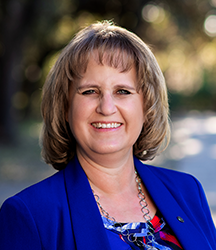by Celina Moreno, J.D., & Christie L. Goodman, APR • IDRA Newsletter • May 2020 •




When applied to education, the same is true. School district health, for example, means more than grades or test scores. It means all students thrive. Educators, families and communities care for each other to ensure the educational well-being of students.
It takes more than a temperature check or finger prick to measure a school district’s health. The core function of state accountability systems is to ensure schools are successfully educating all students. Testing can play an important role in school accountability – one that accepts the responsibility that schools have toward children and communities. But by inflicting high-stakes consequences and using test results to make decisions in children’s lives (e.g., high school graduation) or dictate what children learn, student well-being can get lost.
School district health means more than grades or test scores. It means all students thrive. Educators, families and communities care for each other to ensure the educational well-being of students.
Education leaders want to proactively explore ways to improve the health and success of their schools. Based on research and almost five decades of experience in the field, IDRA developed a change model that helps school, community, family and business leaders chart and navigate school system change. This Quality Schools Action Framework serves as a roadmap to navigate school system change (Moreno, et al., 2019). This roadmap focuses on:
- Elements that must be in place to create schools that work for all children;
- Examples of how people can work together across sectors to strengthen schools;
- Strategies that most often lead to positive change; and
- Indicators of progress and success.
The framework guides action through five intuitive questions: (1) What do we need? (2) How do we make change happen? (3) Which fundamentals must be secured? (4) Where do we focus change? and (5) What outcomes are we seeking? Working through these questions, change-makers can develop their own unique action maps. They can gather baseline data, set specific goals, chart their course, lead effective change, and measure results.
Learn more about the IDRA Quality Schools Action Framework
Get the book: Courage to Connect – A Quality Schools Action Framework
School district health is most visible when schools graduate more and more young people with the preparation to access and succeed in college. By focusing on those outcomes, people can build school capacity to value and engage all students in learning, growing and graduating, ready to pursue their postsecondary goals and dreams.
At the same time, schools must monitor metrics that measure not only outputs and outcomes, but also inputs and throughputs. Measuring outputs alone denies school leaders and communities the chance to understand the reasons behind their results and to focus efforts on substantial improvement. It can also lead to inaccurate assumptions and blaming the characteristics of the students in the school.
Every school is different and faces unique challenges. So one size does not fit all. In our work with educators to build school health, IDRA examines a number of indicators that tell us where to focus. For example, a leadership team can examine the quality of the school’s educational programs of study, materials and other learning resources – and their accessibility to all students. And it can review access to higher-level courses that prepare students for college.
Teaching quality is an important measure of how likely students will be placed with teachers qualified in their fields of study and prepared for the classroom. It considers whether they receive the continual professional development and support to strengthen their skill and practice to serve a diverse student body. It also measures the classroom practices that teachers use to deliver comprehensible instruction that prepares all students to learn, grow and meet academic goals.
Another critical indicator looks at how well the school integrates families and community members into the decision-making processes of the school. It measures the quality of home-school-community partnerships. Are these partnerships based on mutual respect? Are they focused on the shared goal of academic success for all students?
From a governance perspective, a healthy school district has a democratically-elected, well-functioning, representative school board and administrators who prioritize the health, well-being and safety of students. These district leaders prioritize racial and socioeconomic equity and integration in their school assignment and boundary decisions and receive state support to enhance district performance without fear of state takeover.
In addition to these sample areas to explore, the IDRA Quality Schools Action Framework emphasizes how to make change happen. It does not point to a quick-fix or specific program. Meaningful change takes deliberate energy. We have seen that, by producing and leveraging a high-quality education for all students, we can leverage opportunity.
Just look at the monumental shift schools made this spring in response to the coronavirus. Who of us could have foreseen teachers adapting their classroom lessons for online learning, school districts adopting new technologies and training teachers to use them in a matter of days, and adjusting systems for grades, attendance records, special education accommodations and meal service – and all while working from home?
It was not perfect, but when the health of our community demanded it, the system responded. We can do so again to care for the educational health of our school community.
Resources
Moreno, C., Robledo Montecel, M., & Montemayor, A. (2019). “A Unique Blend of Research, Policy, Practice and Engagement to Impact Public Education for All Students,” Association of Mexican American Educators (AMAE) Journal, Vol. 13, No. 3.
Robledo Montecel, M., & Goodman, C.L. (Eds). (2010). Courage to Connect – A Quality Schools Action Framework (San Antonio, Texas: Intercultural Development Research Association).
Robledo Montecel, M., & Montemayor, A.M. (June-July 2018). “InterAction with the Ecosystem – The IDRA Quality Schools Action Framework,” IDRA Newsletter.
Celina Moreno, J.D., is President & CEO of the Intercultural Development Research Association. Comments and questions may be directed to her via email at contact@idra.org. Christie L. Goodman, APR, is IDRA’s Director of Communications. Comments and questions may be directed to her via email at christie.goodman@idra.org.
[©2020, IDRA. This article originally appeared in the May 2020 IDRA Newsletter by the Intercultural Development Research Association. Permission to reproduce this article is granted provided the article is reprinted in its entirety and proper credit is given to IDRA and the author.]


